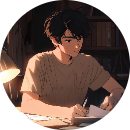Read the following passage and mark the letter A, B, C, or D on your answer sheet to indicate the correct answer to each of the questions 24 to 31
In 1482, Leonardo's career moved into high gear when he entered the service of the duke of Milan, Ludovico Sforza, having written the duke an astonishing letter in which he stated that he could build portable bridges; that he knew the techniques of constructing bombardments and of making cannons; that he could build ships as well as armored vehicles, catapults, and other war machines; and that he could execute sculpture in marble, bronze, and clay. He served as a principal engineer in the duke’s numerous military enterprises and was so active also as an architect. In addition, he assisted the Italian mathematician Luca Pacioli in the celebrated work Divina Proportione.
Evidence indicates that Leonardo had apprentices and pupils in Milan, for whom he probably wrote the various texts later compiled as Treatise on Painting. The most important of his own paintings during the early Milan period was The Virgin of the Rocks, two versions of which exist; he worked on the compositions for a long time, as was his custom, seemingly unwilling to finish what he had begun.
From 1495 to 1496, Leonardo labored on his masterpiece, The Last Super, a mural in the refectory of the Monastery of Santa Maria Delle Grazie, Milan. Unfortunately, his experimental use of oil on dry plaster was technically unsound, and by 1500 its deterioration had begun. Since 1726 attempts have been made, unsuccessfully, to restore it; a concerted restoration and conservation program, making use of the latest technology, was begun in 1977 and is reversing some of the damage. Although much of the original surface is gone, the majesty of the composition and the penetrating characterization of the figures give a fleeting vision of its vanished splendor.
During his long stay in Milan, Leonardo also produced other paintings and drawings, most of which have been lost theater designs, architectural drawings, and models for the dome of Milan Cathedral. His largest commission was for a colossal bronze monument to Francesco Sforza, father of Ludovico, in the courtyard of Castello Sforzesco. In December 1499, however, the Sforza family was driven from Milan by French forces; Leonardo left the statue unfinished and he returned to Florence in 1500
What is NOT mentioned as a creation of Leonardo da Vinci’s while he was in Milan?
A. theatre designs
B. architectural drawings
C. models of bronze horses
D. models for church domes









